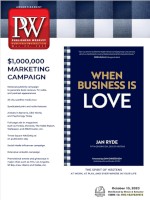Dreamer’s Crush (self-published) pairs trans vintner Cal with widowed vineyard owner Mia.
Why a winery?
Funnily enough, I’m actually allergic to wine. I just thought it was a cool setting. I’ve grown up my whole life in California, so I’ve been around a lot of wineries as well. Wineries are romantic and the setting lent itself to some dramatic moments, plus some moments where I can bring out the characters’ love of wine-making and the many parts of the process.
Cal and Mia bond over a set of historical love letters they discover on the property. What led you to incorporate this parallel love story?
I read a little bit about trans men back in the days before they could go on testosterone or alter themselves physically. They had to really manifest how they wanted to present themselves without any aid. So I thought it would be cool to show a trans man back in the day and then Cal and draw parallels between the two. It really helped my main characters discover who they are through these other people.
How did you develop the character of the villain, Samuel?
I don’t outline my books, things just happen very organically. So I was writing, and I was like, you know what, wine-making is a very male-dominated field, so I’m gonna make it a bit realistic. I’m gonna put in a guy who is used to getting what he wants. To generalize, I put all the really bad attributes of a man into Samuel. I wanted him to be kind of a foil for Cal so that Cal could show his assertiveness. Cal’s got a unique perspective because he did present as a woman for many years. So he comes at the Samuel problem with a two-pronged approach of “I don’t want to step on Mia’s toes by telling her what she should do about Samuel,” but also knowing that Samuel needs to know his place in the winery.
Tell me about your approach to Mia’s grief over her late husband.
In all my other books, I really put my characters through the wringer. This one was going to be a lot darker, too, when I started writing it, but then I realized I didn’t want to write that type of book for my first romance between a trans man and a cis woman. So I decided to use the prologue to set up where Mia is at. You can really see her grief in those short couple paragraphs. Then we fast-forward a bit to where she’s thrown into the winery business and trying to figure out how to keep the vineyard afloat because it was her husband’s legacy. I wanted to show her healing from that grief—not necessarily moving past it, but moving forward with Cal.



 Volume 270
Issue 21
05/22/2023
Volume 270
Issue 21
05/22/2023





